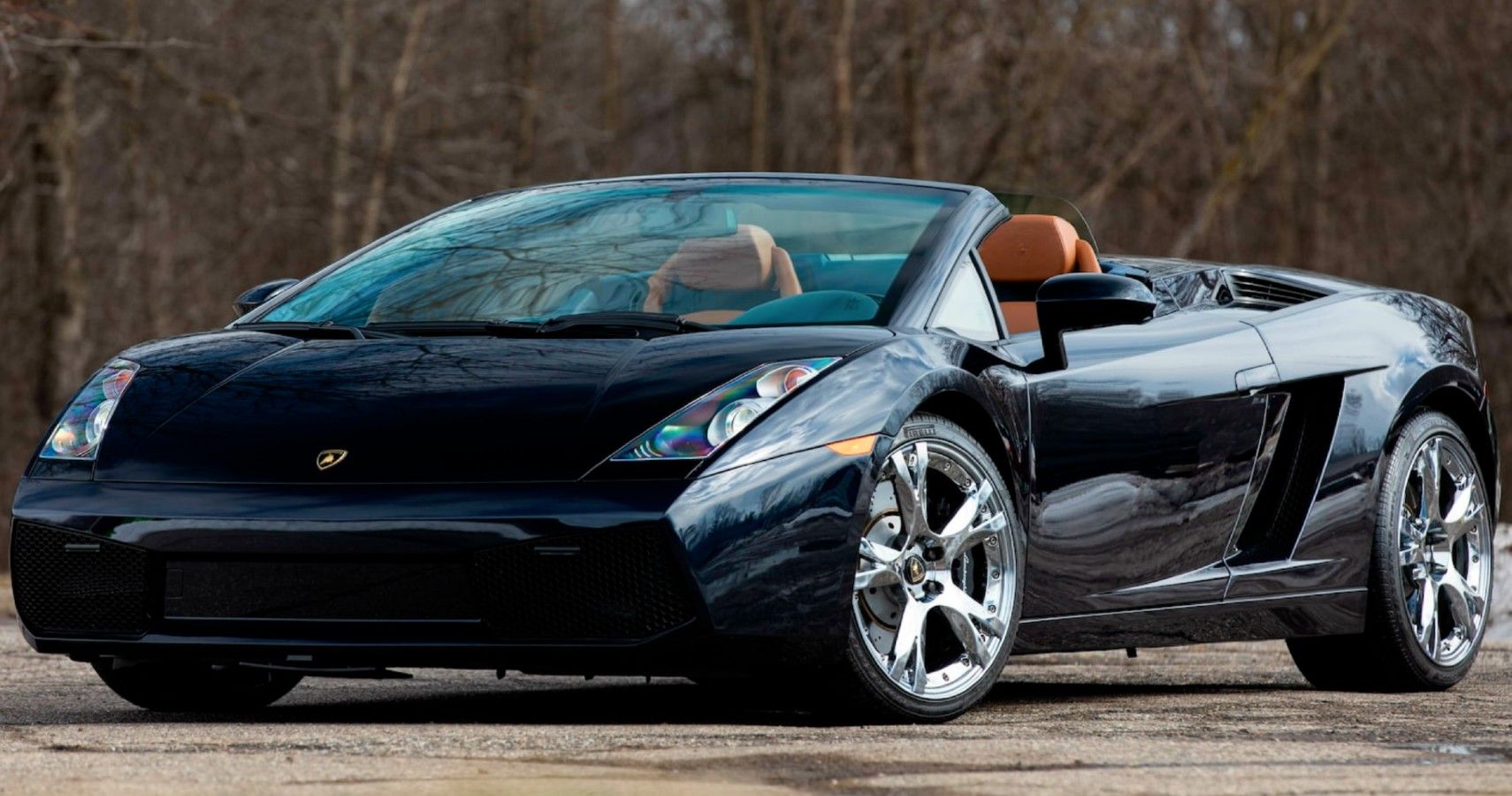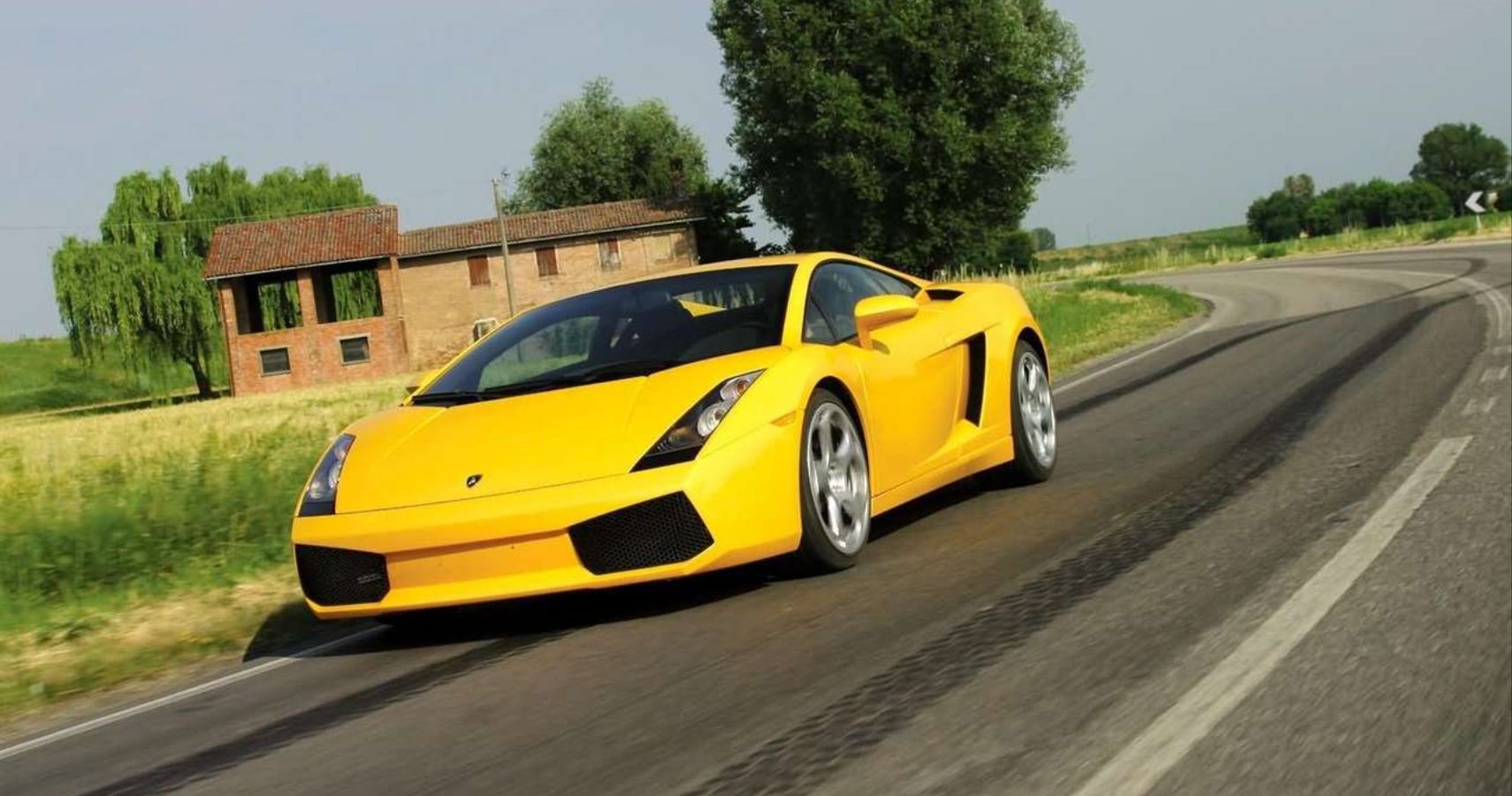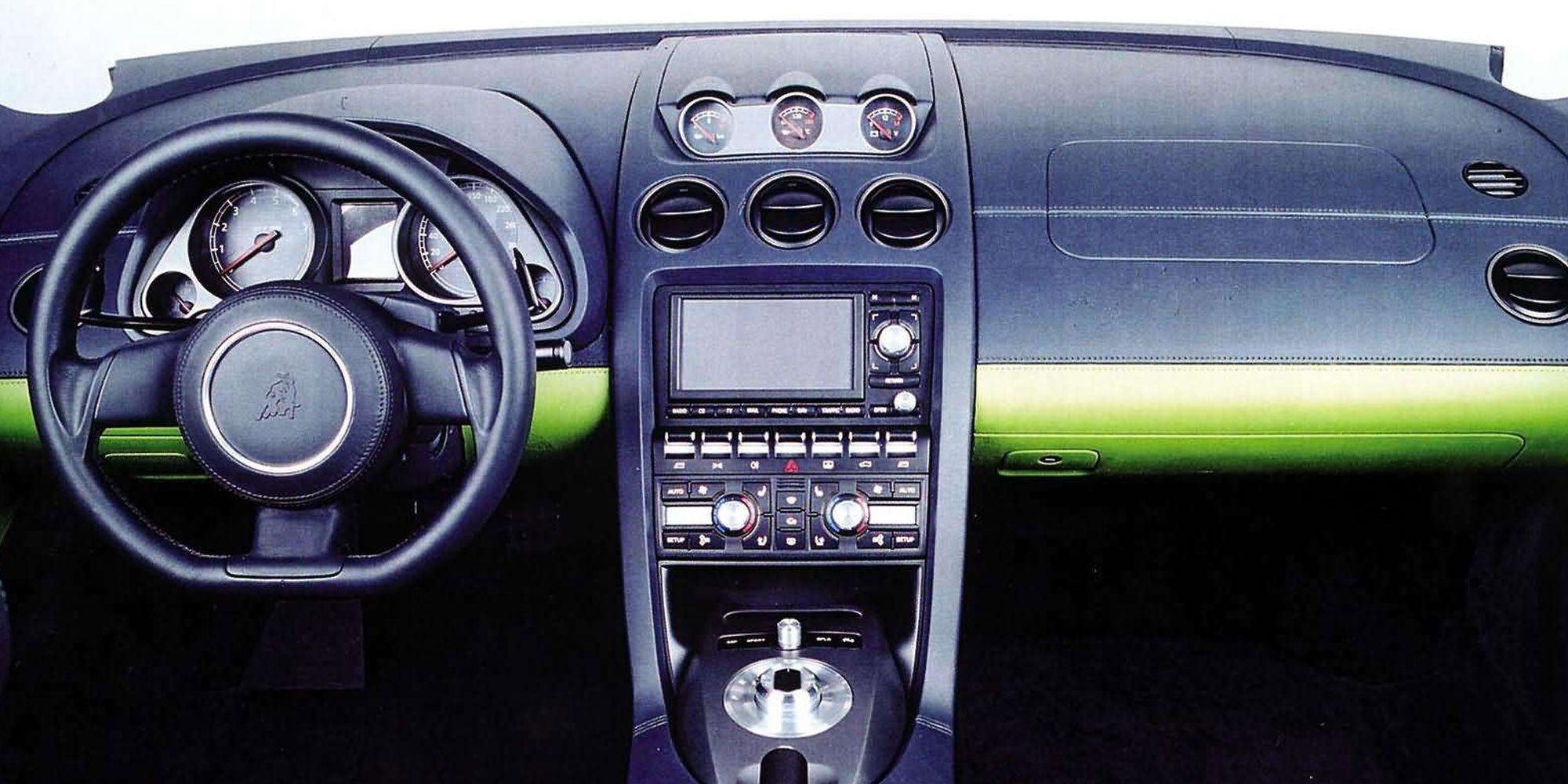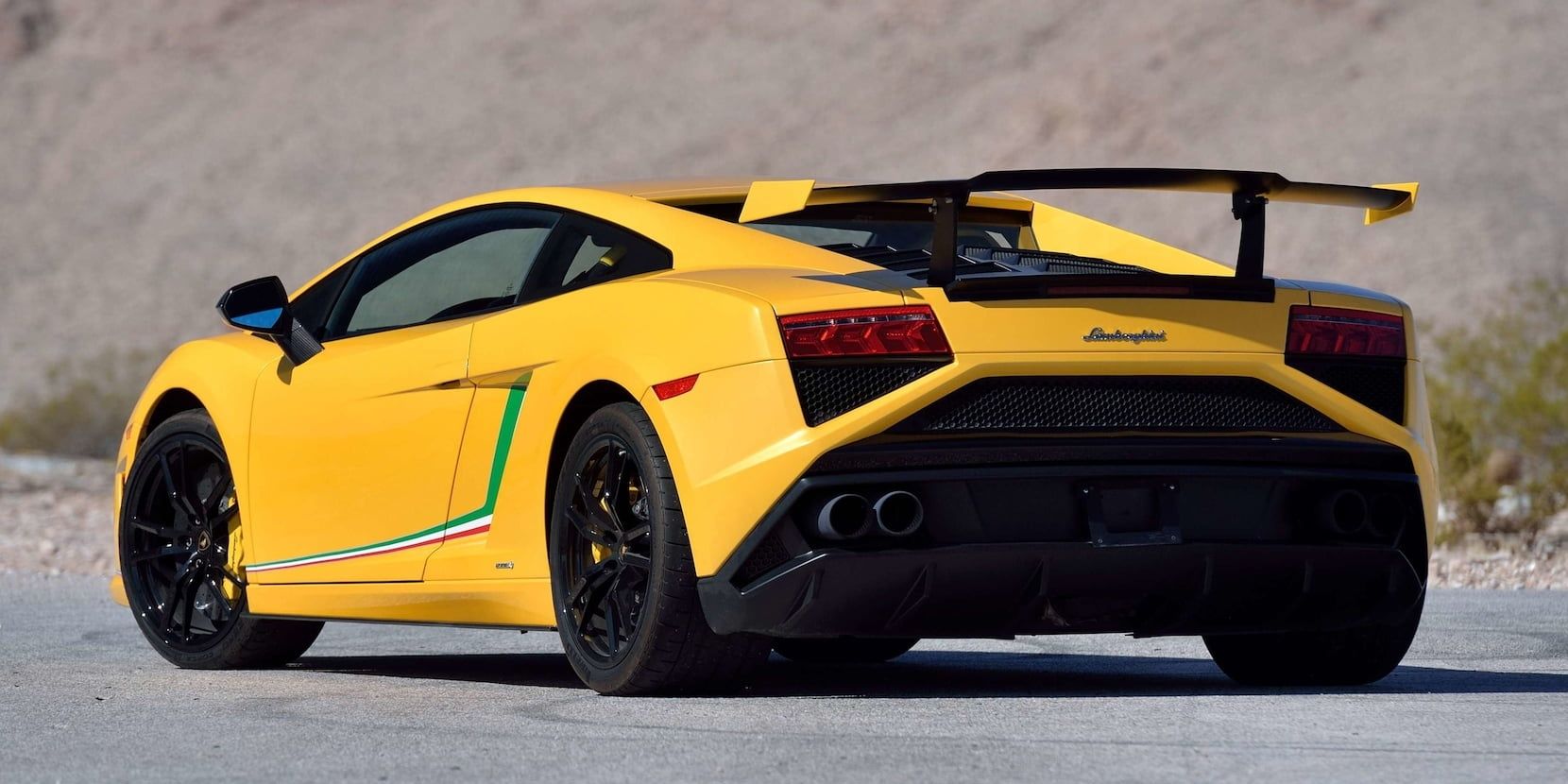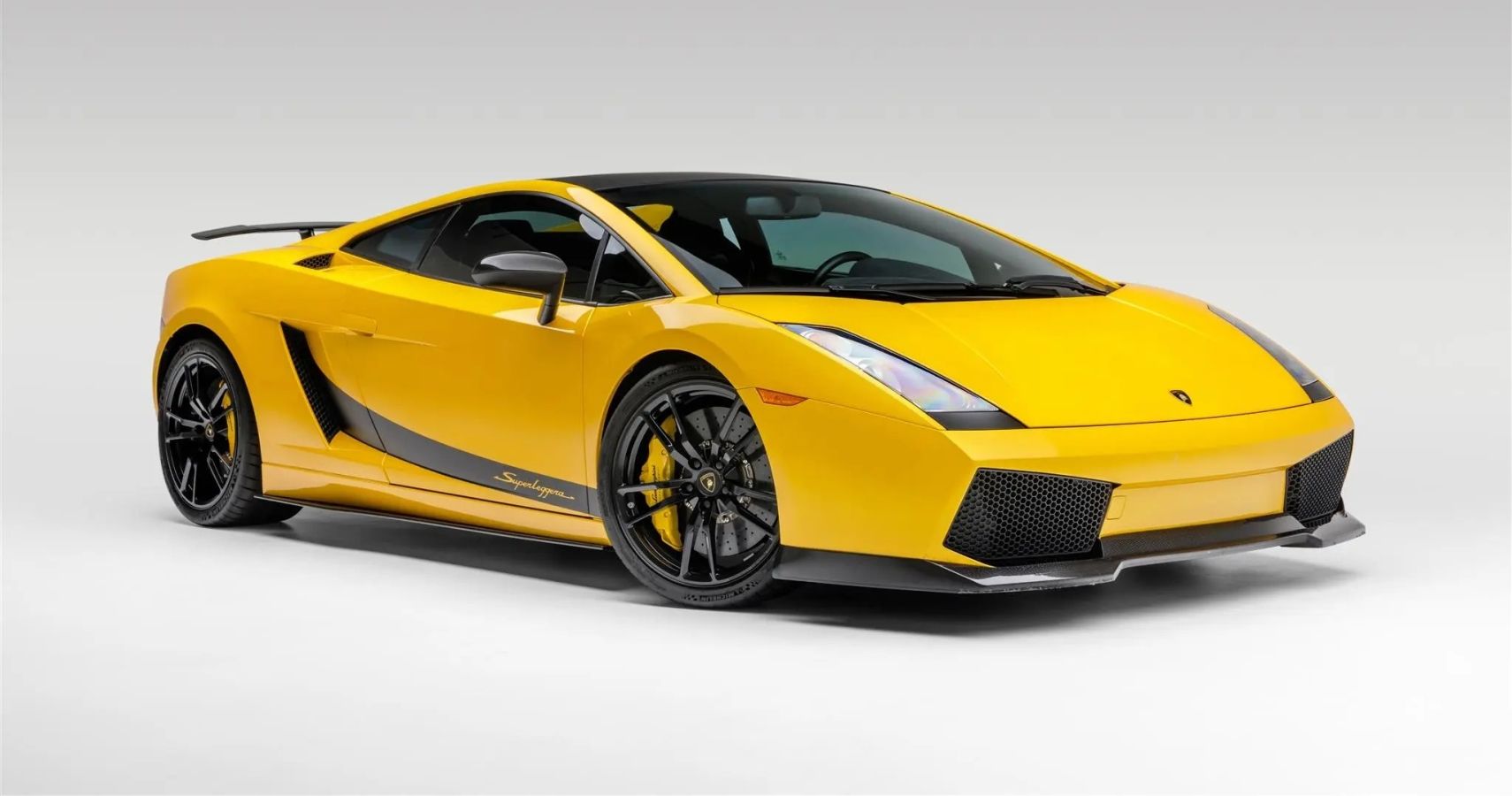Almost everyone can say that, at some point, their dream car was a Lamborghini. Their sleek profile is unmistakable, and their speed never fails to knock a passenger back in their seat. Lamborghini's automotive operations began as a mission to beat Ferrari, and that they did. From legendary models like the Miura and the Countach, to modern classics like the Diablo and the Murcielago, to their current offerings, the Aventador and the Huracan, Lamborghini's recipe for building Italian speed machines has stayed consistent.
One model that particularly caught the public's attention was the Gallardo. Produced between 2003 and 2014, it was the first time Lamborghini had come out with another sports car model since the lesser-known Jalpa of the 1980s. When new, it carried a hefty price tag. Nowadays, however, it's one of the cheapest Lamborghinis you can buy.
Gallardo Was The Best-Selling Lamborghini Of Its Day
When the Gallardo was initially released, the public received it as a baby Murcielago, taking on the same low-slung, swept-back profile as the flagship model. As such, it was also more affordable than the Murcielago. Granted, calling a Lamborghini affordable carries a lot of implications, mainly that you'd still be shelling out six figures for it, but it was still comparably less expensive than its big brother at $166,000 when it was first released.
Because of this lower barrier to entry, more folks were able to scoop up a Gallardo for themselves. In fact, its smaller price tag led it to become the best-selling car Lamborghini had ever produced, selling over 14,000 units in total. And because of that, the Gallardo is less rare. In accordance with the laws of economics, the more widespread a product is, the lower demand becomes, and when demand is lower, so is the price.
With that, you are likely to spot a Gallardo on the used market for prices comparable to a BMW 5 Series or Mercedes-Benz E-Class, leaps and bounds from what they cost originally. However, it's not just its widespread availability (if you want to call it that) that lends it its low price tag.
The Gallardo Shared Many Parts With Audi
It was not as obvious when it was first released in 2003—the Gallardo-based Audi R8 gave things away a little more upon its release—but Lamborghini's partnership with Volkswagen first became evident on the Gallardo. Components including the gauge cluster, navigation system, radio, and climate controls were shared with other Volkswagen products, primarily Audi models. Lamborghini returned the favor once sportier models appeared in Volkswagen's portfolio, giving the Gallardo's steering wheel to the R8, RS4, and 2nd generation TT. This symbiotic relationship between the two Volkswagen sub-brands would continue into the 2010s and 2020s, with Audi lending Lamborghini its infotainment for its entire current lineup.
However, there is a drawback to this partnership. Exotic cars utilizing components from more widely-available cars tend to be frowned upon by enthusiasts who feel like their money is being wasted on something déclassé. Acura learned this the hard way with their newer NSX, costing upwards of $150,000 while using an infotainment system also used on the $15,000 Honda Fit. While the case of the Gallardo isn't as bad, considering Audi is a premium brand, the switchgear that can be found in its cabin can also be found in a 20-year-old A4 with a slipping Tiptronic transmission that costs $5k. Needless to say, as is typical with 2000s luxury cars, it didn't age well.
Why The Gallardo Is Cheap: Depreciation Doing Its Work
That being said, that hypothetical A4 costs so little because of this wonderful little thing called depreciation. Unlike real estate or any other high-cost investment, cars lose value with age. Certain factors can slow or even reverse this phenomenon, such as a proven record for reliability or a cult following associated with the model. Unfortunately for the Gallardo, it has neither of those, and cars in the Gallardo's position have a tendency to lose value far quicker than others, even if it is an exotic.
Though it must be said that there is still a layer of exclusivity to the Gallardo that keeps it from becoming dirt cheap like anything more widely available. As mentioned previously, prices for used examples tend to level with how much a new luxury mid-size sedan would cost in today's market. This is still quite expensive for most consumers.
No Lamborghini Is "Cheap"
Speaking of cost, it needs to be remembered that the Gallardo is still a Lamborghini. Even if it does share bits with some Audi that's sitting in a junkyard, it was engineered by the same people who made the Miura, history's first supercar, and other marvels. Keeping this in mind, maintaining a Lamborghini, be it a Miura or a Gallardo, will be an expensive ordeal. Maintenance has to be budgeted, otherwise, you're asking for a crater in your wallet.
That's not to say that you shouldn't take advantage of how "inexpensive" the Gallardo has become. If you are a gearhead whose dream long was to own a car like the Gallardo and you possess the means to do so, by all means, have at it. Considering the potential for the car to appreciate in value once it becomes old enough to be a classic—and that potential is real—now is the time to jump on this opportunity.
Sources: Mecum, Hagerty

